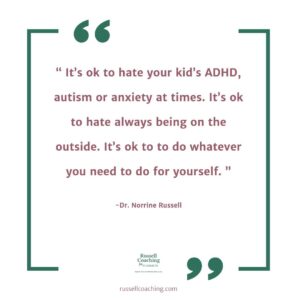Over the next number of weeks, we will be addressing different ways that you can help your student build their executive function. This week we are exploring response inhibition. Response inhibition is the ability to stop yourself from doing the things you aren’t supposed to do. Below are three ways you can help your student build this skill.
Model your thinking. Adulthood is full of moments where we have to stop ourselves from doing what we really want to do. But does your student understand how your mind travels from impulse to decision? Certainly modeling self-control is beneficial, even without an explanation, but allowing your student to see that you both struggle with and can overcome your urges is a powerful teaching tool. So the next time you feel like running a red light, storming out of a meeting, yelling back at someone, but don’t, talk with your student about your experience. You might say something like, “At work today, Bob tried to convince our boss that the product I want to develop won’t work. He didn’t even have a good argument. I was so mad I wanted to storm off. But I made myself take some deep breaths and think about what to say. Eventually, my boss let me talk and he liked my idea. Now I’m glad I stayed. If I’d stormed off like I wanted to, I wouldn’t have been able to work on the product I am so excited about.” Pay attention to when you have these types of experiences throughout the week and share them in conversation with your student.
Positive Reinforcement. Notice when your student resists their natural urges. If your daughter usually interrupts you while you are talking and didn’t this time, make sure she knows you see and appreciate her effort. Try putting into words why that made a difference to you so that she can hear how behavior can affect others in a positive way. “I liked the way you let me say what I had to say without interrupting me. Your careful listening made me feel like you think I am important and worth listening to. That made me feel good inside. Thank you.”
Build delayed gratification by upping the ante. Help your student learn to wait for things and build positive habits. Pick something your student loves, such as screen-time, desert, television, reading together, etc., and offer a higher reward for delayed gratification. “Right now you have an hour to play games tonight, but if you get your homework done first I’ll give you another half hour to play.” Or if attention is a problem, break the tasks up into smaller chunks with rewards along the way. “When you finish your math, you can play a game for 15 minutes before you start on your history homework.”
By modeling response inhibition, reinforcing positive behaviors, and helping build delayed gratification you can help your student learn to delay their natural impulses and think before acting. Building and using these skills will help your student feel better about themselves and lead you both towards a happier life.
BY MONICA MCGUIRE, DIRECTOR OF COMMUNICATIONS, RUSSELL COACHING
How useful was this post?
Click on a star to rate it!
Average rating 5 / 5. Vote count: 2
No votes so far! Be the first to rate this post.


Responses
This is great advice Dr. Russell, I am putting into to practice today!